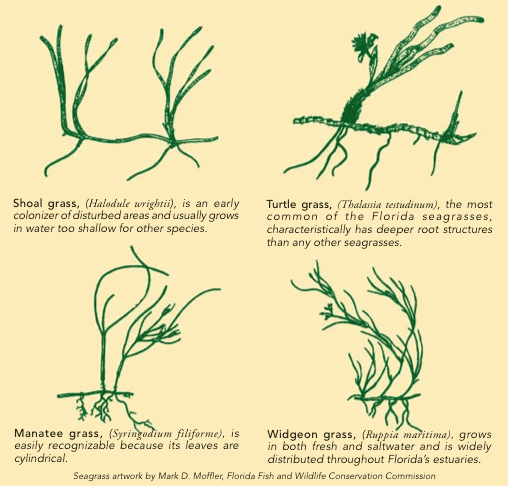
Mapping seagrasses in Sarasota Bay is a technically detailed process that consists of interpreting seagrass signatures from high-resolution aerial photographs and delineating these signatures as seagrass polygons on maps of the bay. Aerial photographs are acquired more or less every two years enabling scientists to look for changes in seagrass coverage over time. Seagrass coverage maps are developed by delineating areas of seagrass that encompass a minimum area of ~20 hectares. Each seagrass polygon is categorized as either patchy (> 10% and < 25% cover) or continuous (> 25% cover) based on how much seagrass exists within individual polygons.
While this information is valuable for looking at seagrass trends on a large (baywide) scale, additional fine scale analyses on the condition of seagrasses are not possible from this product. The number of seagrass patches within a polygon is not considered, thus no information is available for ranking polygons beyond either a “patchy” or “continuous” category. The type of seagrass (i.e., turtle, manatee, or shoal grass) cannot be identified at this level of resolution, so historical shifts in seagrass species composition cannot be reconstructed as well.

Because of these limitations, the Sarasota Bay Estuary Program supported a research project by Mote Marine Laboratory to identify, evaluate, and assess changes in seagrass areal extent within the bay, with special attention given to seagrass polygons that have shifted categories (patchy to continuous or continuous to patchy). Secondly, the research was designed to examine whether areas where seagrass polygons have been recorded had undergone changes, either increases or declines, in seagrass cover over time. This research is ongoing.
|